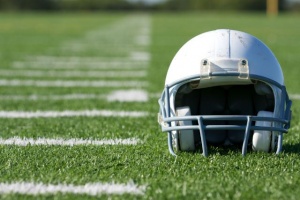Protective Sports Equipments: Difference between revisions
No edit summary |
No edit summary |
||
| Line 32: | Line 32: | ||
= Mouth Guard = | = Mouth Guard = | ||
= Neck, Chest and Upper Extremities Protection = | |||
Revision as of 06:03, 15 February 2016
Introduction[edit | edit source]
One of the most important aspects in sports medicine and in prevention of athletic injuries is protective gears. Physical therapist's role is to ensure safety, prevention of injuries and protecting existing injuries.
Protective Materials[edit | edit source]
Highly resilient materials are used when protection from repeated impacts is required. Non-resilient materials can be used when one time or occasional impact is expected. Different types of protective materials include:
- Foam – Two main type: open-cell and closed-cell. Open-cell foams are low density materials, have the capacity to absorb fluids and are commonly used to pad bony prominences or hard edges of protective equipment. Open-cell do not have good shock absorbing qualities. Closed-cell has superior shock absorbing abilities, resilience to absorption of fluid and is more preferred.
- Air management pads are relatively new type used when maximal shock absorption is required in lightweight gear.
- Gel like Orthogel is useful in absorbing shock. Gel is useful for protecting bony areas such as the foot, hand and AC joint. It can be cut as a horseshoe pad to treat ankle sprain, which can be used with cryotherapy. Lack of longevity is draw-back associated with gel.
- Felt is extremely useful for creating various types of supports and protective pads. It is used for arch supports and as horseshoe to reduce edema to treat ankle sprain.
- Thermoplastics can be used for splints and custom pad. It can be divided into plastic and rubber. Plastic is more appropriate for small splints, such as on the hand. Working temperature for this materials range from 150 to 180 degrees F.
- Casting material like silicone elastomer is popular in fabricating soft splints for hands or wrist injuries.
Head Protection[edit | edit source]
List of sports requiring head protection include: Amateur boxing, baseball, cycling, football, ice hockey, men’s’ lacrosse, softball, and
whitewater sports.







